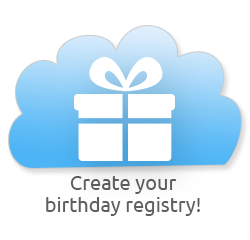What are you able to build with your blocks?
Castles and palaces, temples and docks.
Rain may keep raining, and others may roam,
But I can be happy and building at home.
—Robert Louis Stevenson, Block City
Forget flashes, beeps, and batteries! When it comes to fostering imagination and building a solid foundation for math, no toy equips kids better than old-fashioned blocks. A good set of hard maple unit blocks is the single best investment a parent can make towards a child's math education. Based on 2x4 standard wood planks, every block is a fraction or multiple of the basic unit (51⁄2” x 23⁄4” x 13⁄8”) and, therefore, can combine in beautifully mathematical fashion. At two your child will build towers; at ten, complex catacombs, creating and solving one calculus problem after another.
Great for Boys and Girls
Block play helps build 3-D math reasoning and spatial skills. Researchers are now questioning whether it's nature or nuture that makes boys by 4½ years old test superior at these skills. So please buy those blocks for Sally every bit as much as for Sam.
Unstructured Block Play
The A#1 most essential toy of this digital age requires no batteries. Imagination brings them to life. Through free and open-ended block play, children create and literally grasp number concepts and start to develop problem-solving skills. Older children who are having difficulties with math are advised to go back to the block table and play.
Structured Block Play
Here are some structured block play ideas that parents can enjoy with their children. By no means are they intended as substitutes for free and open-ended play. Instead consider these ideas as part of the alternate ways that blocks can be used at home.
- Practice shape words: put a handful of blocks into a bag and have the child pick each out one by one. Have the child describe it to you without looking! Have the child only use the sense of touch and his vocabulary to describe the block.
- Make your own shape sorter: Have the child choose about 6 blocks and then have him trace them onto a piece of paper. Color in the shapes according to the colors of the blocks that were traced. Let the child then match up the actual blocks with the tracings. This is a great activity for practicing small motor skills and involving 3 fun activities – tracing, coloring, and block play. Make sure to rehearse shape and color names!
- Learning "attributes": Take 20 blocks of different shapes, sizes, and colors and have thechild sort them into groups by a like trait. Don't tell the child how to sort them! Then, have the child explain why he sorted them the way he did. Younger children are only able to sort by one attribute – color! Older children will be able to sort by shape and size. You can see how your child's cognitive skills develop over time with this exersize.
- Domino effect: Have your child collect 10 or so same size rectangular blocks and set them up so that toppling the first will create a domino effect. Children love watching the dominos fall and it teaches them cause and effect. This exercise also helps develop small motor skills.
- Seriation: Have your child take a set of blocks and place them in size order. For younger children, start with only 3 blocks as this is a very difficult task for them. Gradually add blocks to the set. Placing things in order (seriation) is the skill developed through this exercise. Also, visual discrimination is practiced.
- The pattern game: This is especially fun with older children. Take a group of blocks of varying sizes and colors. Create a pattern with 2 blocks and have the child copy it. Once the child copies it correctly add another block. Have the child copy that as well. Develop a pattern, do not build a structure. Once you have something like 2 red blocks, 2 green blocks, 2 red blocks, have the child guess what will come next. Older children will see the series developing and anticipate the next block or two. This game develops seriation and visual discrimination.
- Math made easy! For many children math can be made simpler by having them use concrete ojects to represent numbers. With a set of blocks a child can set up 2+2=4 by counting out two blocks and counting out another two blocks and then joining the piles together to count four blocks. Early math skills are made easier by concrete representation. And remember, if you chald can add, he CAN subtract! Just show him.
|




